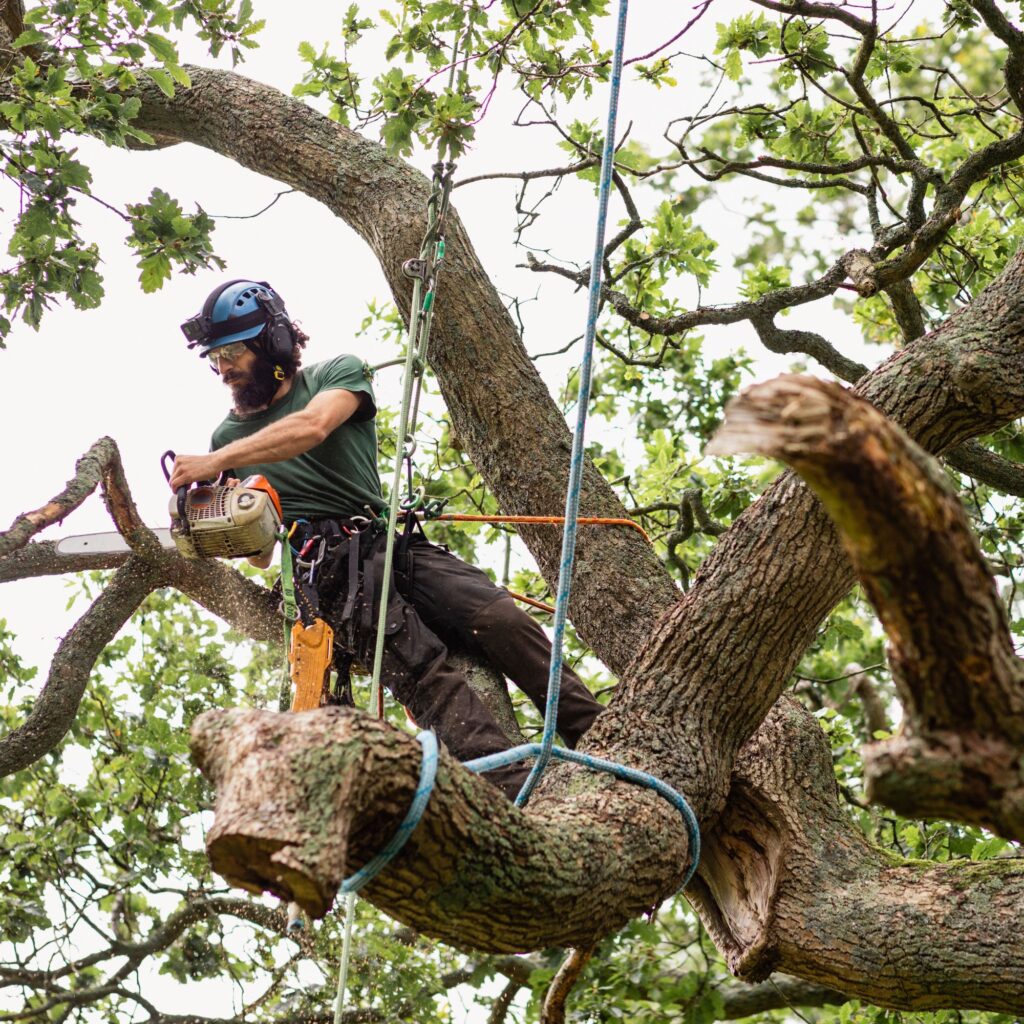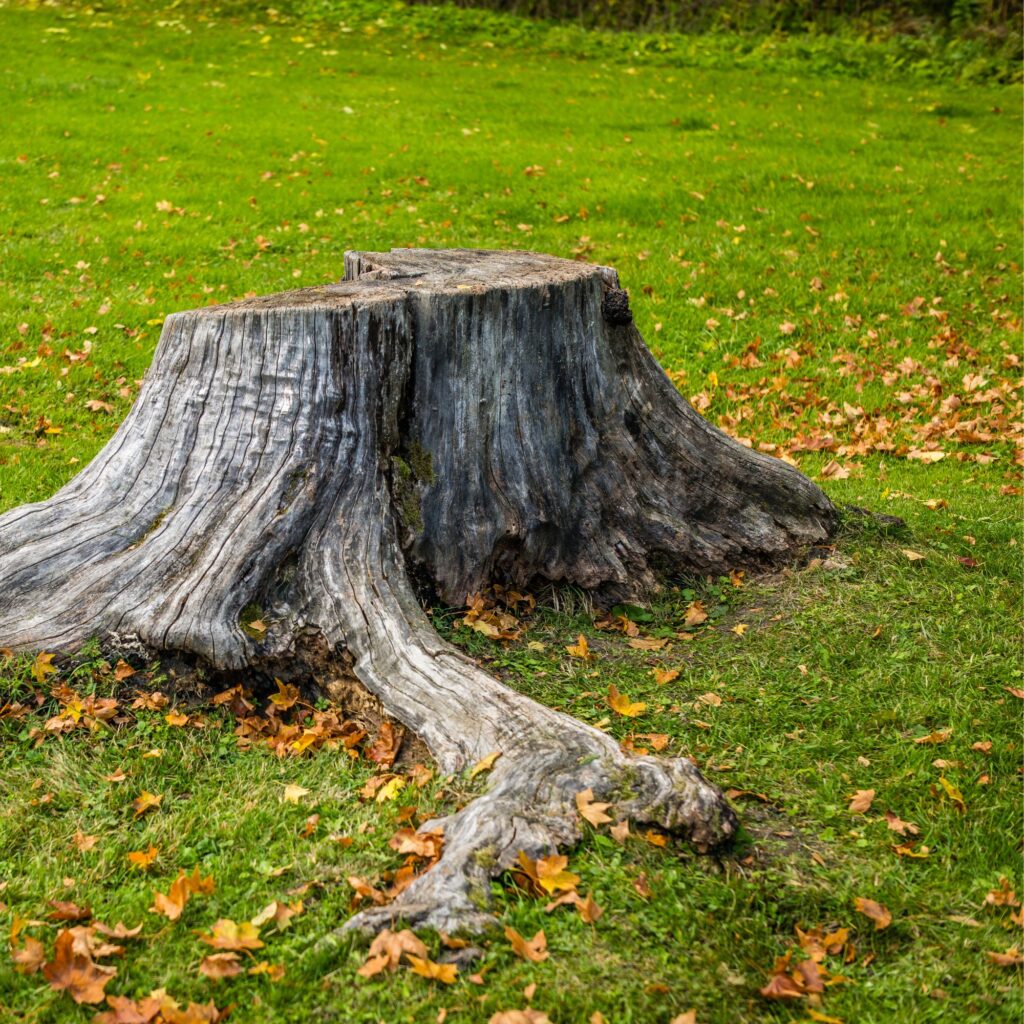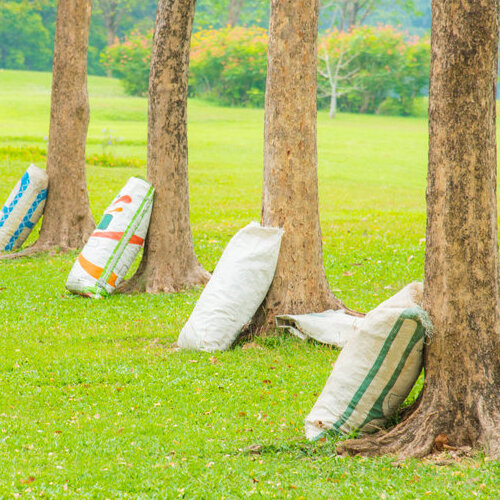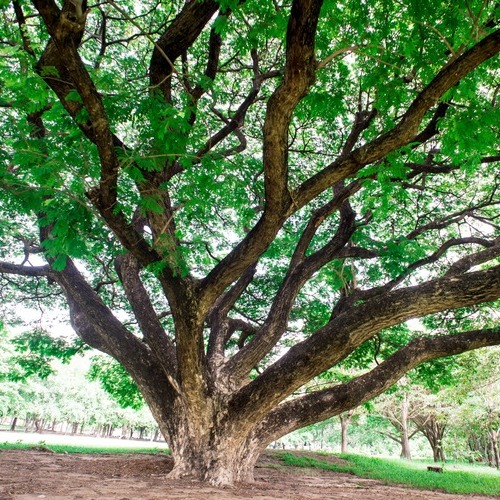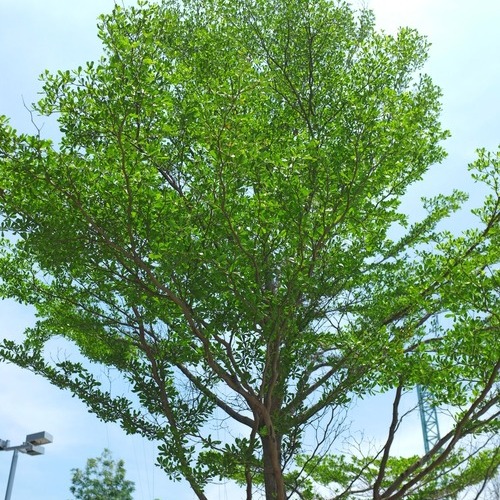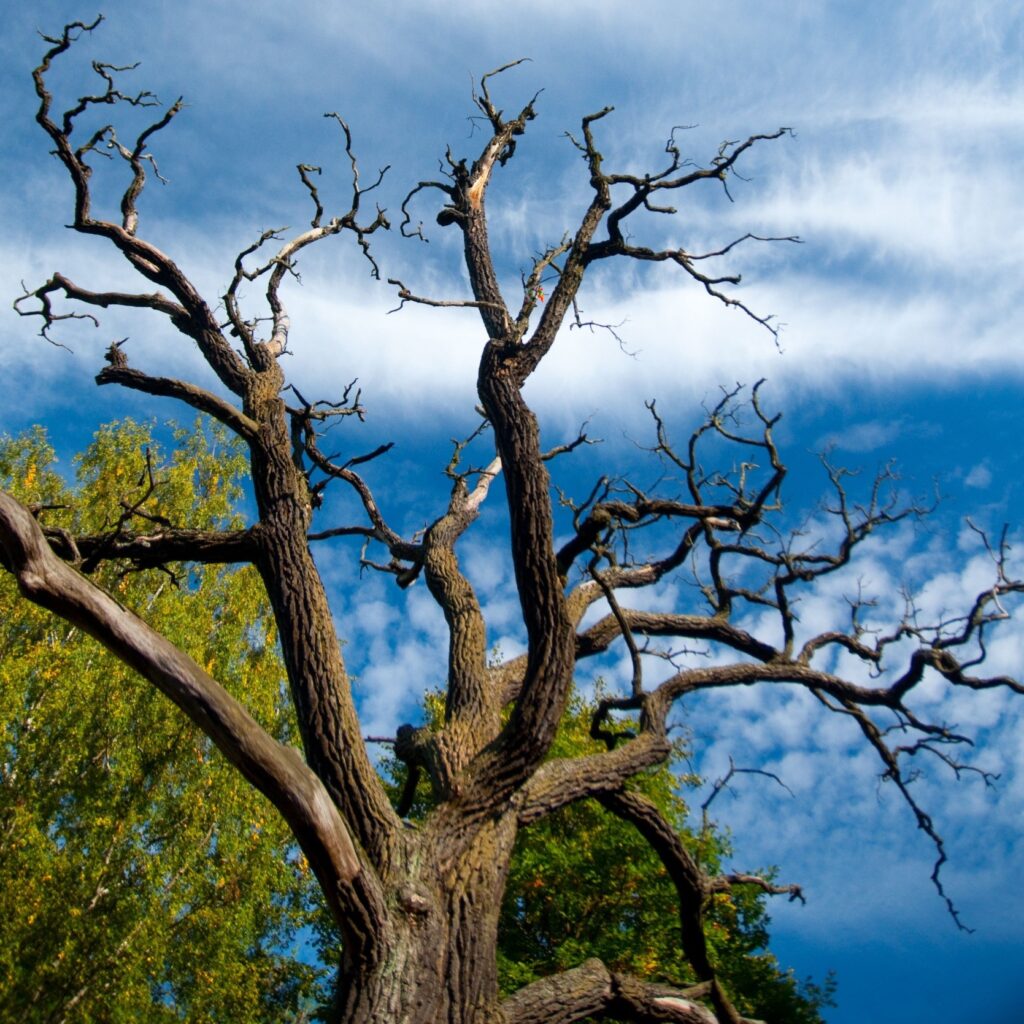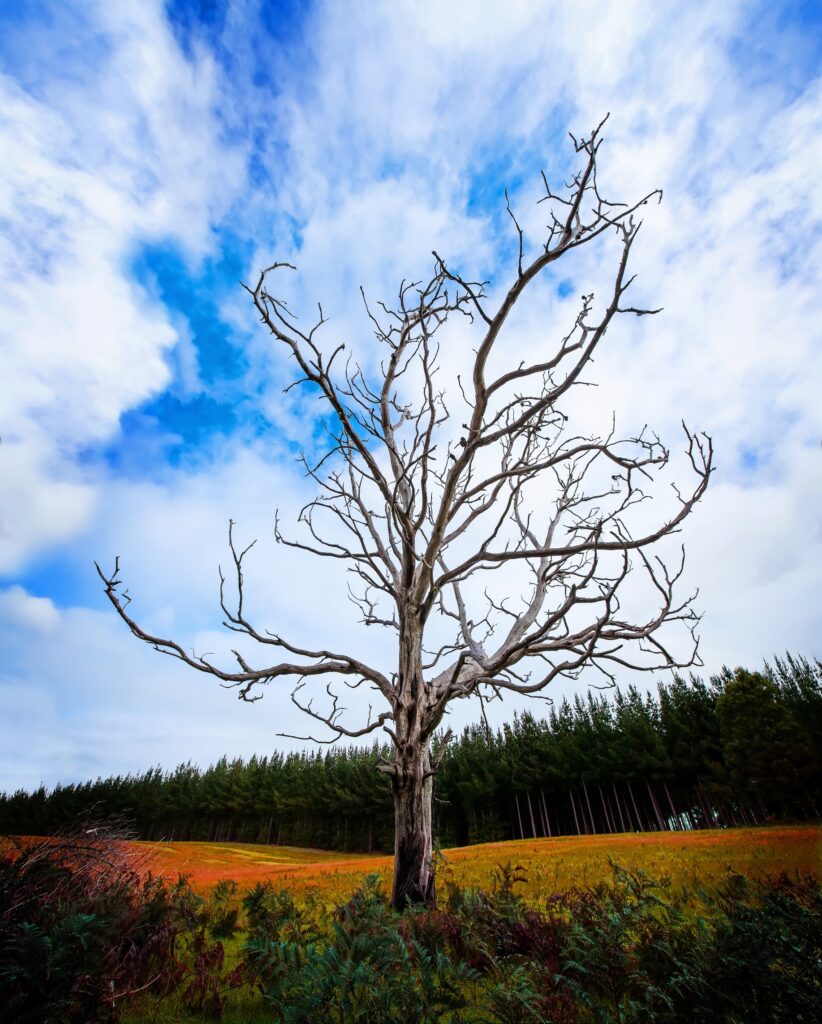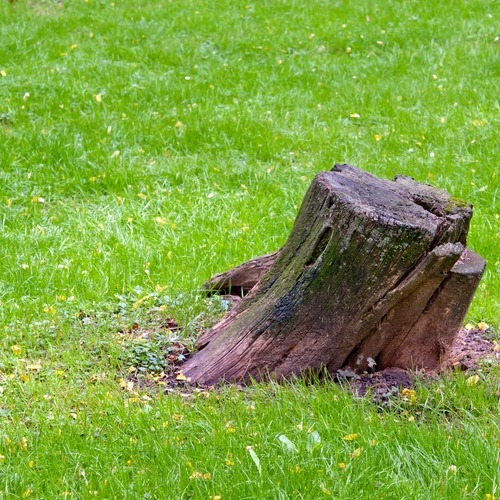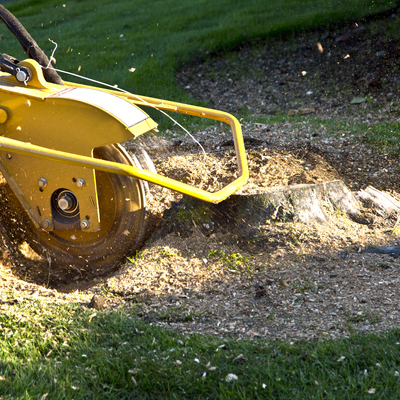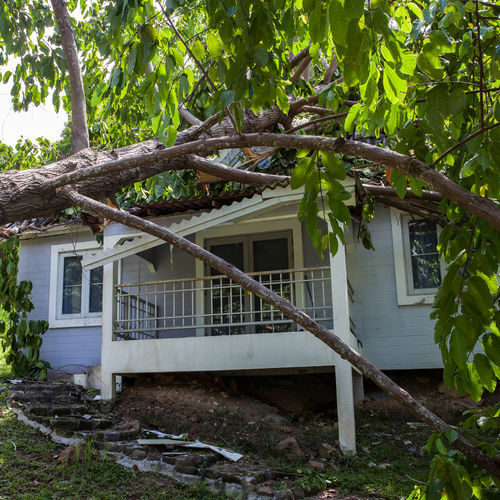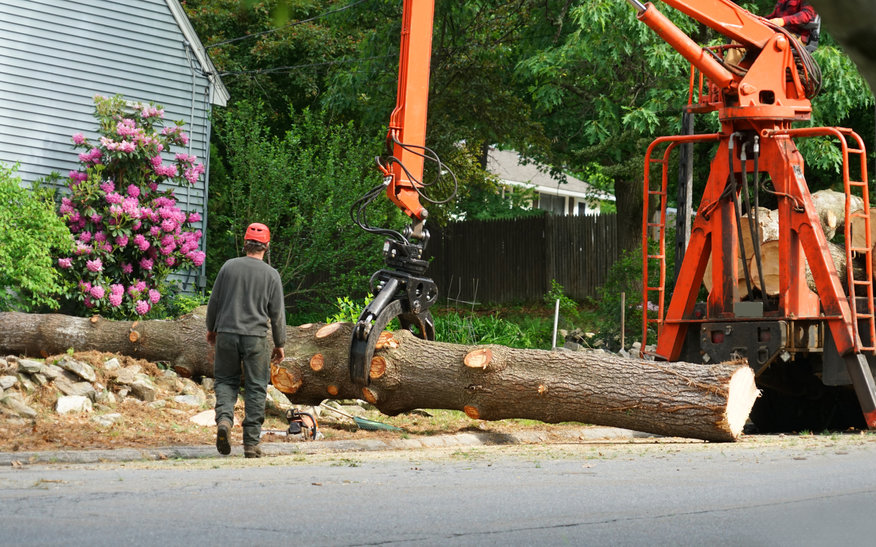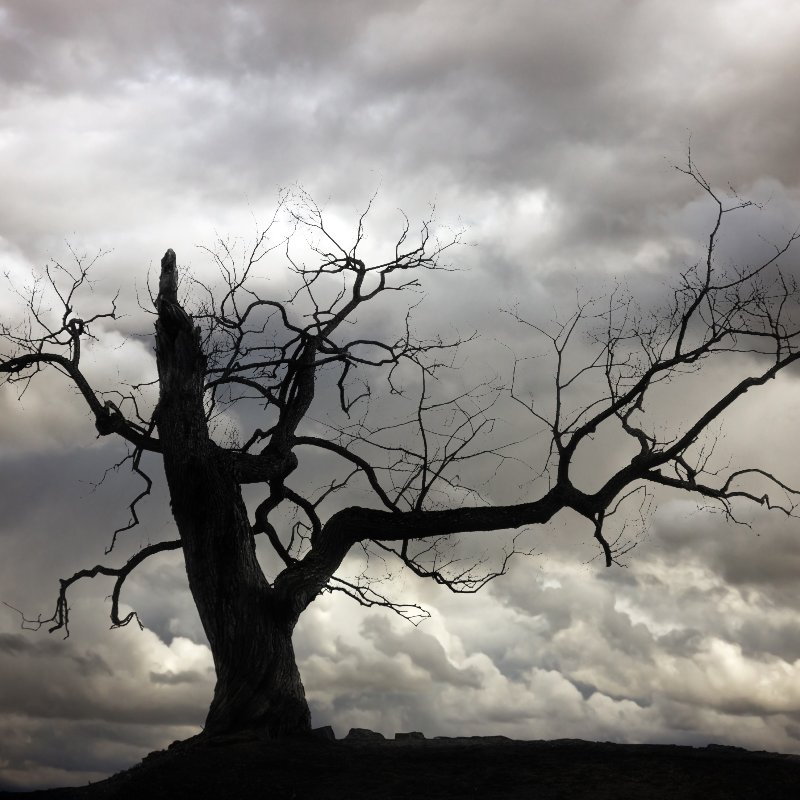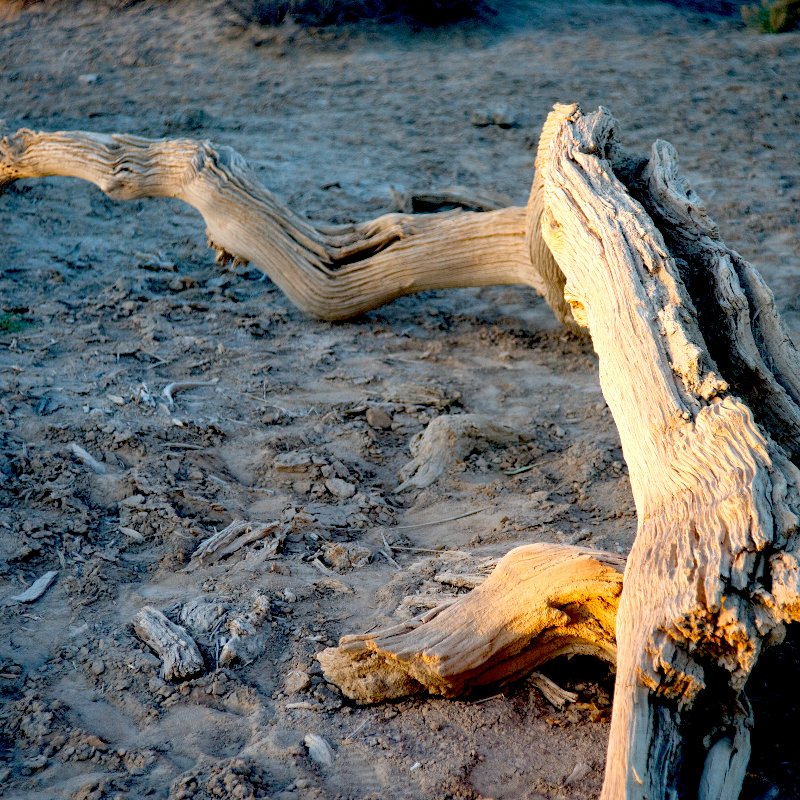
What is Tree Cabling?
Tree cabling is a technique used to provide structural support to trees that have weak or vulnerable branches. It involves installing flexible cables and braces between major limbs to reduce the risk of failure during storms or due to structural weaknesses. The process typically starts with a thorough assessment by an arborist to identify areas of concern and determine the best placement of cables. Once installed, these cables help redistribute the weight of heavy limbs and reduce the strain on weak attachments, thereby enhancing the tree’s stability and prolonging its life. Tree bracing and cabling is a delicate operation that requires expertise to ensure it is done correctly without harming the tree, and because of this is usually only done by experienced professionals.
When Do I Need Tree Bracing and Cabling?
Tree cabling becomes necessary in several scenarios where a tree exhibits structural weaknesses that compromise its stability and pose potential risks. This technique is particularly relevant for trees with large, heavy branches that are poorly attached or show signs of splitting, which could lead to limb failure during storms or high winds. Additionally, trees with multiple trunks or co-dominant stems are candidates for cabling to prevent structural failure and ensure their longevity. Cabling also addresses safety concerns in urban environments where trees overhang buildings, roads, or recreational areas, reducing the risk of falling branches. Furthermore, if a tree has sustained storm damage that has weakened its structure, cabling can stabilize it and prevent further deterioration.
Ultimately, the decision to employ tree cabling should be informed by an assessment from a qualified arborist who can evaluate the tree’s condition and recommend appropriate measures to enhance its safety and health.
What are the Benefits of Tree Cabling?
Tree cabling offers several key benefits when implemented by professionals. Firstly, it enhances the safety of trees by reinforcing weak or structurally compromised branches, reducing the risk of them breaking and causing property damage or personal injury during storms or adverse weather conditions. By distributing weight more evenly among branches, cabling helps maintain the overall stability of trees, particularly those with multiple trunks or large canopies. This proactive measure not only protects the tree itself from potential damage but also preserves its aesthetic value and environmental benefits within landscapes. Additionally, tree cabling can extend the lifespan of older or historically significant trees by preventing further decay or structural decline.
It’s important to remember that the expertise of certified arborists ensures that tree bracing and cabling is done correctly and that it is minimally invasive, promoting both the safety and longevity of trees in urban and natural settings alike. Though it can be tempting to attempt this kind of system on your own, this can sometimes do much more harm than good.
What are the Challenges of Tree Bracing and Cabling?
As already mentioned, tree bracing and cabling is a delicate process. Though it has many benefits, it can also present a number of challenges. These challenges necessitate careful consideration and expert management. For example, one significant challenge is ensuring the cables are installed correctly without harming the tree. Poorly placed cables can restrict growth, cause bark damage, or even introduce infection points that compromise the tree’s health. Another critical aspect is maintaining the balance between providing structural support and preserving the tree’s natural aesthetics. Visible cables can detract from the visual appeal of mature trees, impacting the overall landscape design.
Additionally, the effectiveness of cabling can diminish over time as trees continue to grow and change structurally. Regular inspections and adjustments are essential to ensure the cables remain effective and do not become too tight or loose. Moreover, the initial cost and ongoing maintenance of tree cabling can be significant, requiring property owners to weigh the investment against the benefits of preserving tree safety and longevity. Overall, addressing these challenges requires the expertise of certified arborists who understand the complexities of tree physiology and have the skills to implement cabling solutions effectively while minimizing negative impacts on tree health and aesthetics.
How Does an Arborist Determine Tree Bracing and Cabling is Needed?
An arborist assesses whether a tree requires cabling through a comprehensive evaluation of its structure, health, and surrounding environment. Key indicators include the presence of large, heavy branches with weak attachments or signs of splitting. Trees with multiple trunks or co-dominant stems are also candidates for cabling, as these features can lead to structural instability over time. The arborist considers factors such as the tree’s age, species characteristics, past storm damage, and its proximity to structures or high-traffic areas where falling branches could pose a hazard. They conduct visual inspections and sometimes use tools like resistograph drills to assess internal wood decay or weaknesses.
As you can see, this is a process that takes an incredible amount of knowledge and experience. If you believe you may benefit from tree bracing and cabling in Fort Worth, TX, the team at Tree Spark can provide the assistance you require. Call us today at (817) 717-7737 to learn more about our services.

